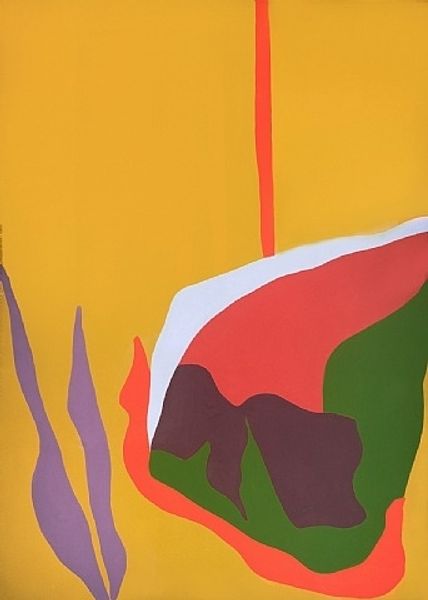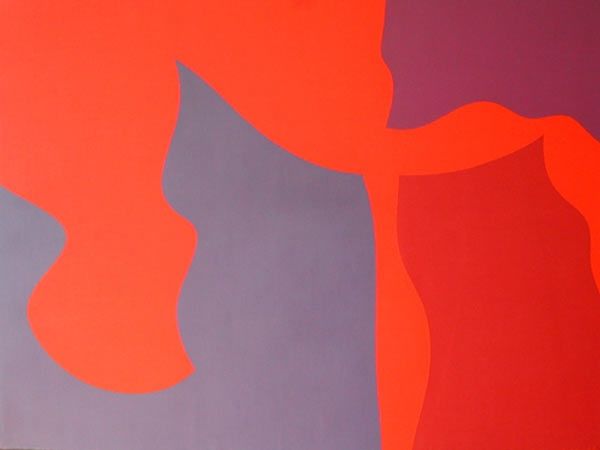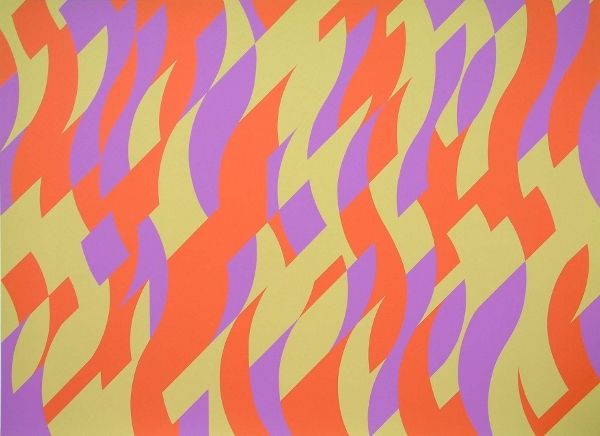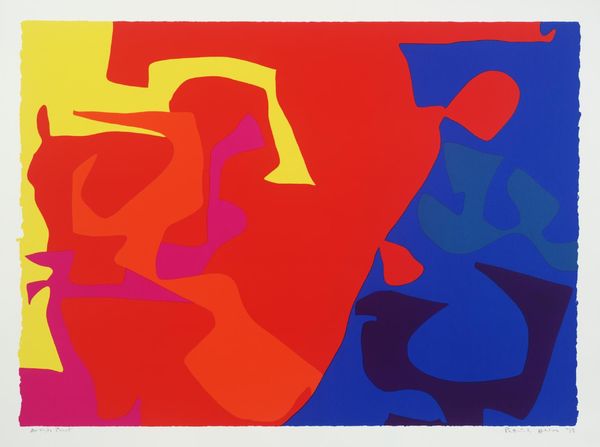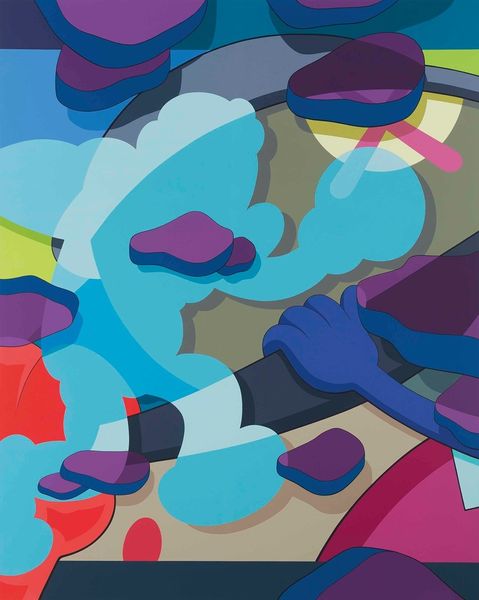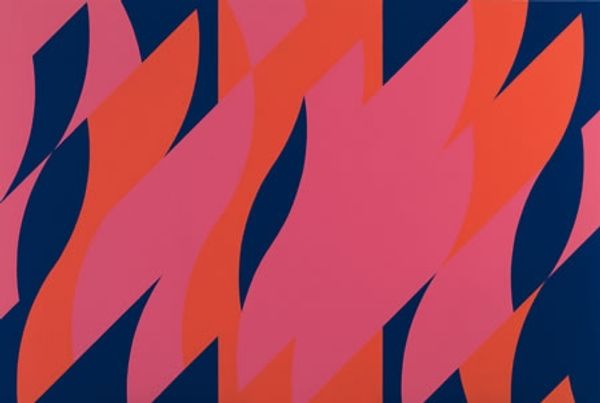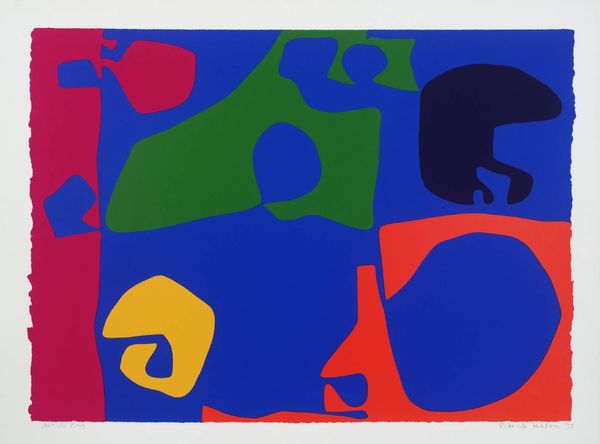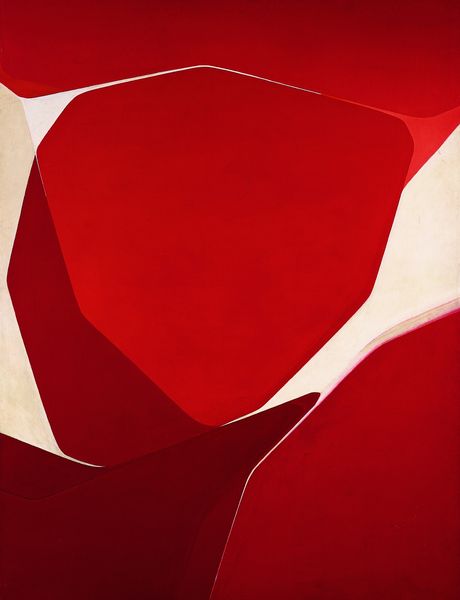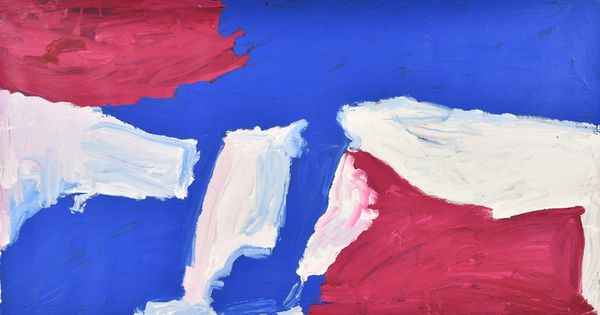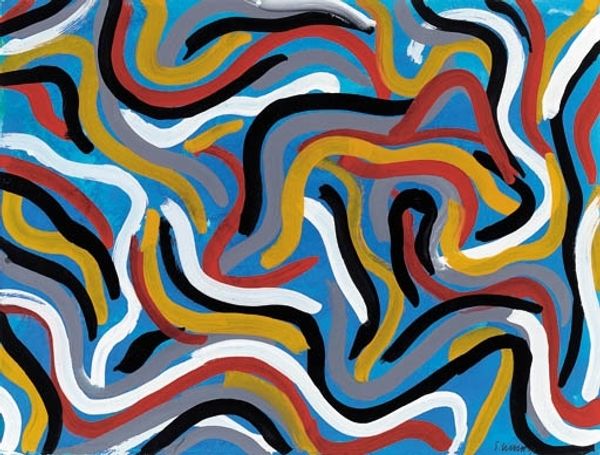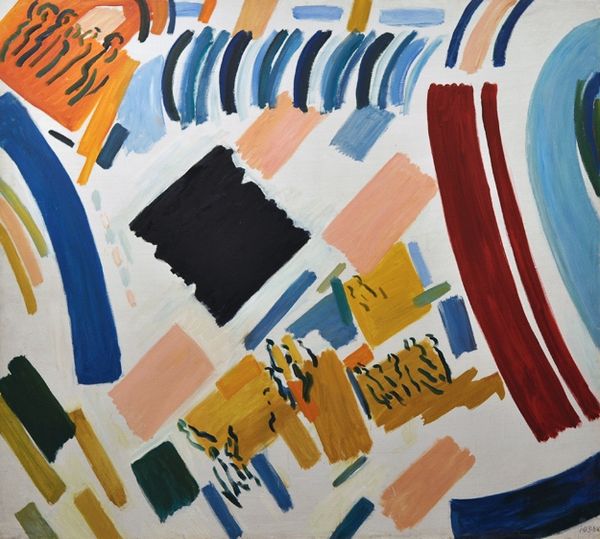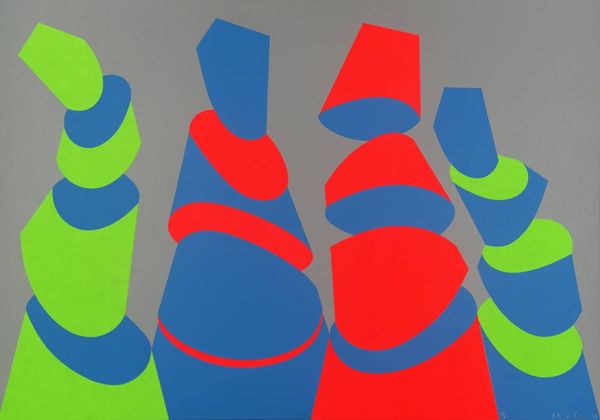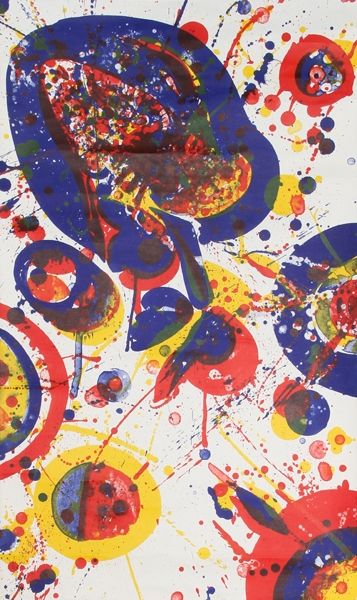
Copyright: Modern Artists: Artvee
Curator: Here we have Andy Warhol's "Camouflage" from 1986. Executed with acrylic paint, it's a fascinating exploration of visibility and concealment within popular culture. What are your initial thoughts? Editor: Striking! At first glance, it's bold. The bright red background with the biomorphic shapes in contrasting blue, white, and peach really jump out. Ironically, the "camouflage" pattern seems designed to attract attention rather than conceal. Curator: Exactly! That tension between hiding and revealing is central to understanding the piece. Warhol was deeply interested in how images circulate in society, and here, he takes a symbol typically associated with military anonymity and transforms it into something conspicuous and glamorous. Editor: The screen-printing process is pretty evident here. You can see some irregularities in the application of the paint and a slight texture coming through which speaks volumes about its means of production, mass production precisely, reflecting how standardized even 'art' making can be under a capitalist system. I wonder about the accessibility and cost-effectiveness of that medium at the time. Curator: Well, consider Warhol’s Factory. It was like a production line. He wasn't just creating paintings but building an entire artistic brand and enterprise. This piece engages with themes of commercialism, commodification, and celebrity – challenging conventional notions of originality. The military itself is also big business after all. Editor: And using something as blunt and obvious as camouflage becomes another readymade lifted into high art. Even these relatively inexpensive materials helped him question what could and could not become Art with a capital A. The choices really ground the work. Curator: Absolutely, the camouflage pattern itself carries cultural weight, particularly in the context of the Cold War. But Warhol, in his characteristic manner, detaches the pattern from its original context. The piece forces us to question whether he critiques military culture or simply recognizes its aesthetic appeal. Editor: Perhaps both. In commodifying such politically-charged imagery, the actual content loses its substance, becoming yet another desirable good up for sale. Thinking about camouflage as pattern leads me to question which is better—an artwork that stimulates intellectual thought and provokes real emotional responses, or a simple design? Curator: His "Camouflage" forces us to reckon with the role of art in popular culture and how effectively symbols can be detached and re-contextualized within contemporary society. It prompts us to reflect on who creates these symbols, for whom, and with what cultural consequences. Editor: True. By bringing this mass-produced image to the forefront, he invites conversations about labor, the politics of appropriation, and challenges inherent definitions of the artist's hand.
Comments
No comments
Be the first to comment and join the conversation on the ultimate creative platform.
